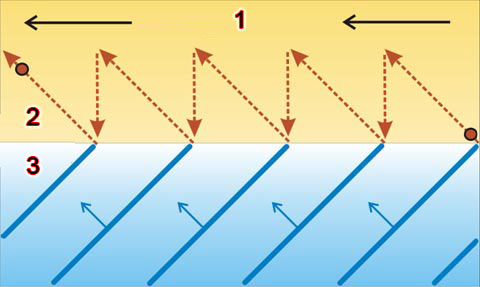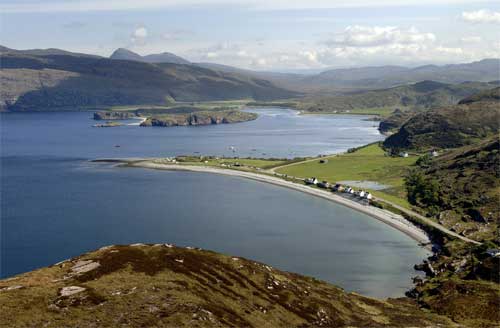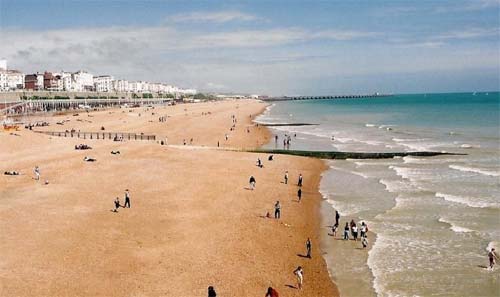Longshore drift
Waves that hit the beach at an angle carry sand and gravel up the beach face at an angle. When the water  washes back the sediment
washes back the sediment  is carried straight back down the beach face. Individual particles are moved along the beach in a zig zag pattern. This is called longshore drift.
is carried straight back down the beach face. Individual particles are moved along the beach in a zig zag pattern. This is called longshore drift.
Click to view larger and see the legend.
Longshore drift diagram: The brown arrows show how waves can move an individual sand grain along a beach.
- Longshore drift
- Beach
- Waves
Longshore drift causes spits to build up at the mouth of rivers  or at the end of a point of land.
or at the end of a point of land.
Longshore drift also builds barrier beaches and barrier islands. Barriers are long narrow strips of sand and gravel that are separated from the main shore by lagoons, marshes and mud flats.
« Back 













